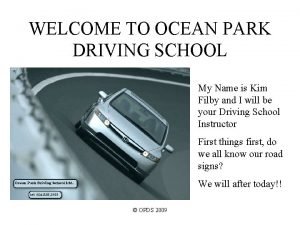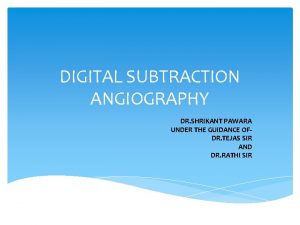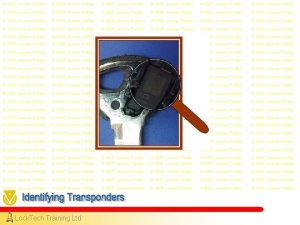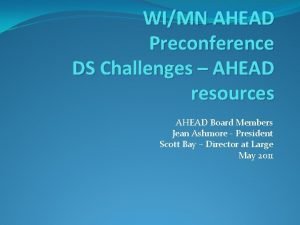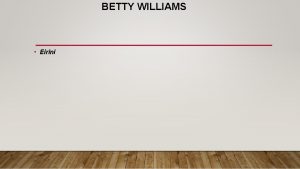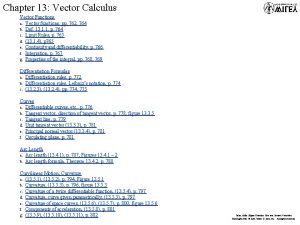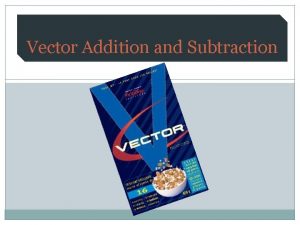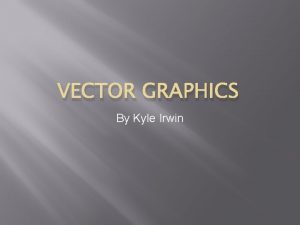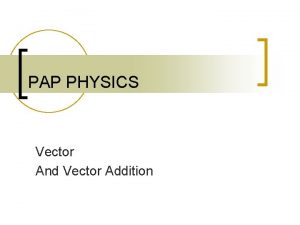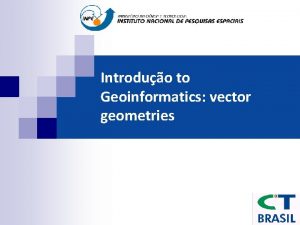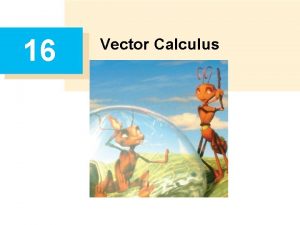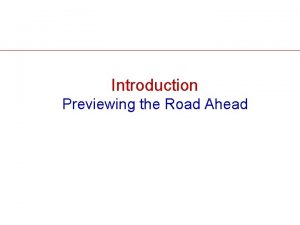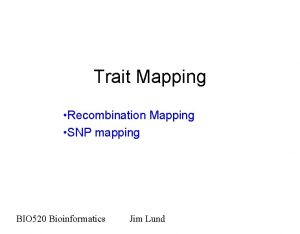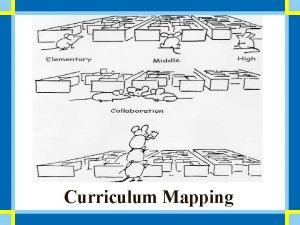Road Ahead for Vector Mapping Craig Williams Jeremy



















- Slides: 19

Road Ahead for Vector Mapping Craig Williams, Jeremy Bartley, & Yaron Fine

Agenda • Why vector tiles? • Vector tiles in Arc. GIS • Arc. GIS content demo (styles etc. ) • Roadmap for vector tiles (APIs etc. ) • How we build them, what’s different • Additional demonstrations • Recap

Web Mapping today • Typically vector content (points, lines, polygons) • Displayed on top of basemaps • Since ~2005, basemaps have usually been raster tiles • Dynamic updates of the map consist of two things: • - Updating overlay content as drawn in client - Changing the basemap Paradigm is changing

Raster tiles for high dpi devices 256 128 Example from Google Maps

Why vector tiles? Raster is Faster, but Vector is Corrector – Joseph Berry

Why vector tiles? • GPUs have changed the landscape - On your devices (Open. GL) - In your browser (Web. GL) - On your desktop (Direct. X, Open. GL) - Even in virtualized systems (v. GPU) • Vector data can remain vector • Raster data still best served as raster in most circumstances

Advantages of vector tiles • • • Display quality - Best possible resolution for Retina displays - Small efficient format Dynamic labeling - Clearer, more readable text - On the fly labeling for heads up display Map Styling - Streets, Topo, Canvas from one tileset - Day and Night mode - User restyling Labels rotate and flip

Vector tiles in Arc. GIS • Tiles produced in Arc. GIS Pro - Use the Mapbox vector tile spec - - • Which uses Google protocol buffers Styling converted to Mapbox gl style spec More aggressive overzoom - Builds on generalization work done in past Arc. GIS releases - More work and research to be done in this area

Vector tile format • • Vector tiles are compressed into protocol buffers - Compact binary format for transferring data - Data is organized into layers of geometry with key/value pairs of attributes A style file defines - The layer order - Definition query for each layer - Symbol information for each layer

Preview of Arc. GIS Basemaps

Cooking process • • Entire world - ~ 8 hrs on a desktop machine - Tiles ~ 13 GB - Styles share tiles Compared to raster - ~ many weeks on a server cluster per map style - Tiles ~ 20 TB

Arc. GIS vector tiles roadmap • Cooking tools to be released in Arc. GIS Pro 1. 2 (early 2016) • Services in Arc. GIS Online and Arc. GIS Server 10. 4 (early 2016) • Tile consumption - Arc. GIS Runtime Quartz – Beta 2 - - Arc. GIS Pro 1. 2 - - Ground up implementation Will share Runtime implementation Arc. GIS Java. Script 4. 0 API – Demonstration capability now in Beta 1 - Currently uses mapbox-gl-js library

Arc. GIS vector tiles service http: //<catalog-url>/<folder>/<service. Name>/Vector. Tile. Server |--fonts/ |--styles/ |--sprites/ |--tilemap/ |--tile |--root. json Optional export tiles capability Service preview example

Producing tiles in Arc. GIS Pro

Tiles in the Java. Script API 4. 0 Beta 1

Vector tile client code (Runtime) • The client code is implemented in C++ and Java. Script • The C++ code is using both Open. GL and Direct. X for rendering • Shared code across our platform

Tiles in Arc. GIS Runtime Preview of Quartz implementation

Thank you… • Please fill out the session survey in your mobile app • Select Road Ahead for Vector Mapping in the Mobile App - Use the Search Feature to quickly find this title • Click “Technical Workshop Survey” • Answer a few short questions and enter any comments

 Quién soy
Quién soy Ocean park driving
Ocean park driving Donatella bonaiuti
Donatella bonaiuti Lane use control signal
Lane use control signal Sam and verna williams
Sam and verna williams Andy williams robert williams
Andy williams robert williams Robbie williams janet williams
Robbie williams janet williams The associative mapping is costlier than direct mapping.
The associative mapping is costlier than direct mapping. Forward mapping vs backward mapping
Forward mapping vs backward mapping Transform mapping dan transaction mapping
Transform mapping dan transaction mapping Edge enhancement
Edge enhancement What is paved and unpaved road
What is paved and unpaved road What is a position vector
What is a position vector How is vector resolution the opposite of vector addition
How is vector resolution the opposite of vector addition Unit vector
Unit vector Vector unitario formula
Vector unitario formula Kraft per area
Kraft per area Uppställning multiplikation
Uppställning multiplikation För och nackdelar med firo
För och nackdelar med firo Elektronik för barn
Elektronik för barn

